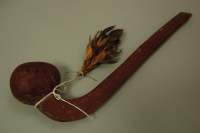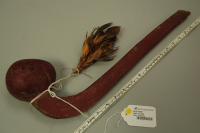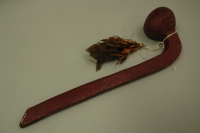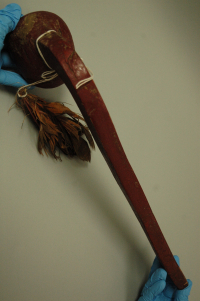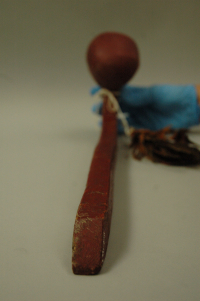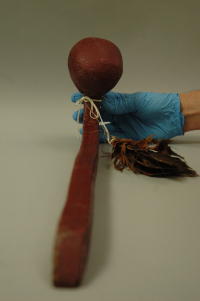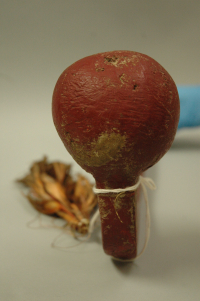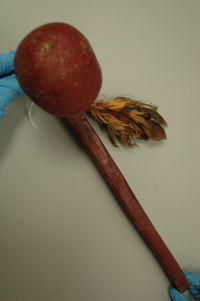club, ball-headed
club, ball-headed
club, ball-headed
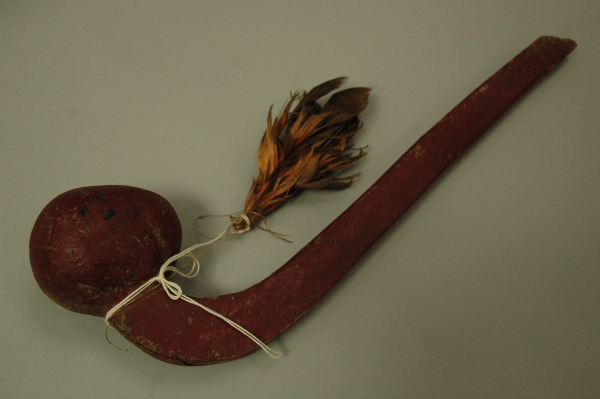
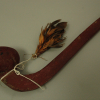
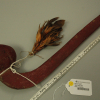

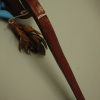

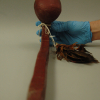
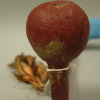
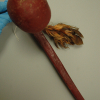
Wooden ball-headed club of dense hardwood painted red with a bundle of hawk feathers (split and dyed orange) attached to it with commercial thread. Collected by John Reynolds, merchant at Manitowaning, Manitoulin Island before 1920. Anishinaabe.
"According to museum staff-based on Manitoulin Island provenance which could also point to an Ottawa or Potawatomi attribution, See Johnson 1929 (J. Hall, Feb. 1984)" CMC record.
GRASAC generated.
Read More About This Relative
wood, feathers, string (linen?) , paint
carved from single piece of wood and painted red
"Carved wooden clubs in two styles are made...these are used in the social dances held from time to time during the winter. Most of these clubs are made by the Potowatomi and native tradition again tells us that it was the Potowatomi who introduced them here." (Johnson, 205).
Rectangular, laterally flattened handle curves and terminates in a globular head formed from a natural knot. Head is irregular, rounded. Butt end is slanted to form an upturned point. Bundle of feathers (pink/brown and orange/brown) are tied together at one end with a wrapping of string. Feathers are secured to handle with four strands of string wrapped around the handle just above the head.
Collected by John Reynolds before 1920.
Provenance
John Reynolds (1865-1924) lived and was a prominent merchant in Manitowaning, Manitoulin Island, Ontario. He ceased collecting by 1920. After his death tin 1924, the collection went to his daughter. The item was transferred to the CMC in 1981 from the Canadian War Museum.
<br/>Brasser, Ted. "War Clubs." American Indian Tradition, 7.3 (1961): 77-83.
<br/>
<br/>Peterson, Harold L. American Indian Tomahawks. Museum of the American Indian, Heye Foundation, 1965.
<br/>
<br/>Holmes, William H. "The Tomahawk." American Anthropologist, 10 (1908): 264-276.
<br/>
<br/>Johnson, F. "Notes on the Ojibwa and Potawatomi of the Parry Island Reservation, Ont." Indian Notes. 6.3 (July 1929): 193-216.
<br/>
 Knowledge Sharing Platform
Knowledge Sharing Platform

